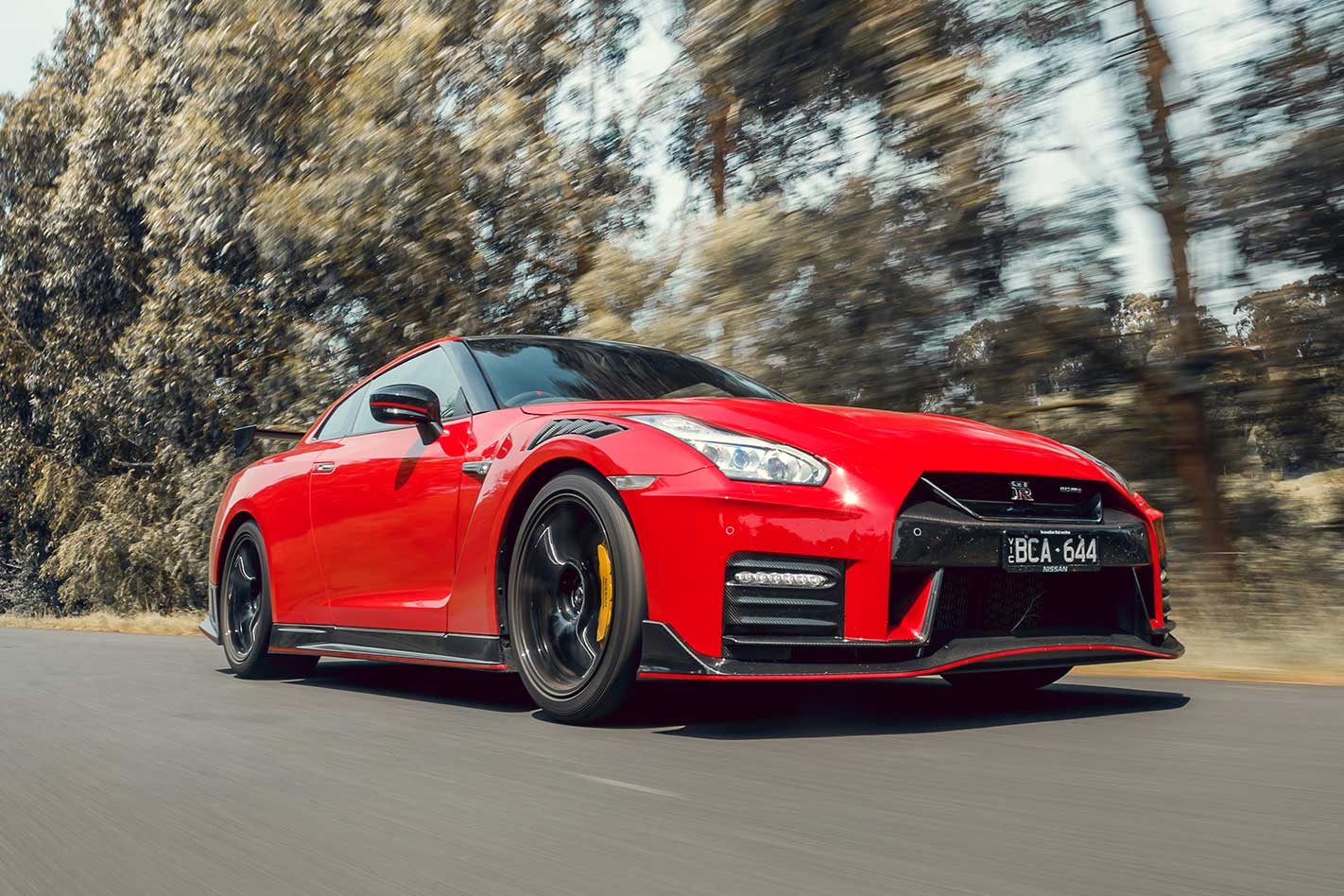There was no warning. Not even a sign. Suddenly, the blind corner I’ve barrelled into aboard the Nissan GT-R Nismo at warp speed has tightened. Hard. I wrench on the alcantara-wrapped steering wheel praying that the tyres bite. They do. And the nose tucks into the bend.
But then the corner tightens again and an unmentionable part of my body clenches. No mortal road car would make it. The G-force readout is already well above 1g. As the bend pulls to the left I’m so convinced the front wheels will push I cover the brakes, hoping some load transfer will arrest us in the lane over.
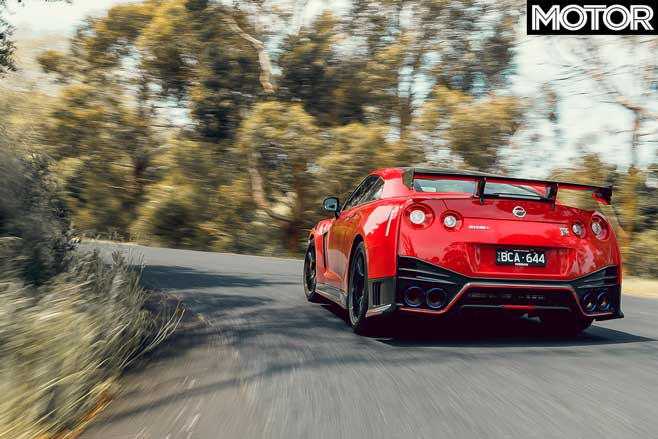
To my amazement, with more steering lock, the Nismo hunkers down and keys into the road even harder, its Vibrant Red body skimming the long grass inside the corner as it hugs the apex. I unwind the steering, lift off the brake, then resume my squeeze on the throttle. The wastegates open, the roar inside intensifies and the scenery blurs once again. If anything could take that bend faster, it hasn’t yet been invented.
It’s hard to believe Nissan’s R35 GT-R will soon be 13 years old. Three generations of Porsche 911 have reigned in that time. Yet as the world continues to wait and see how, or even if, Nissan will replace it after all these years, engineers continue an unending process of refining the four-wheel drive monster. The 2020 GT-R Nismo is the latest result of that hard work.
It’s also the maddest, baddest and fastest GT-R you can buy. At least in Australia. The Nismo that set a 7min 08.769sec Nürburgring Nordschleife lap time in 2014 can only be built for Japan and American customers. So Australia, like the rest of the world, continues to score the slightly tamer one.
But that doesn’t change the fact it’s also the most expensive. At $378,000, the Aussie GT-R Nismo is a whopping $78K more expensive than the ‘old’ one. Or a sobering $184,200 more than the base GT-R, even without the record car’s trick differentials, suspension and two-seat configuration. Instead, it mainly owes the price jump to carbon. Lots of it.
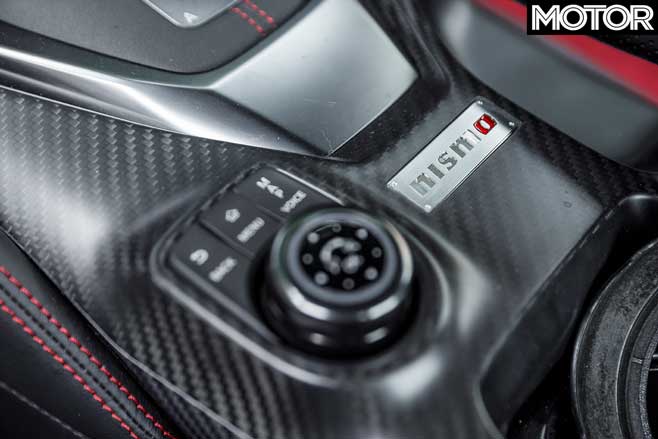
The R35 has been criticised for its full figure since it debuted, so Nissan’s engineers seemingly eyed off the Nismo GT3 racecar for diet inspiration. The Nismo’s doors and shell are the only body components that remain metal as carbonfibre spreads to the front guards and roof. And these targeted upgrades do more than slash weight.
For instance, the gills scalloped into the guards pull air from the engine bay and add 7kg of downforce on the front axle, without drag penalty. Meanwhile the roof, made from a lighter and tighter weave, lowers the centre of gravity even further. Combined, these new body components drop 8.5kg from its kerb weight.
That all said, slashing that from what is still a 1700kg-plus car is like holding the tomato sauce on your cheeseburger because you’re on a diet. So Hiroshi Tamura, the Nissan GT-R product chief, begged the company’s financial gods for years to sign off on carbon-ceramic brakes. Now approved, they’ve been worth the weight – or lack of.
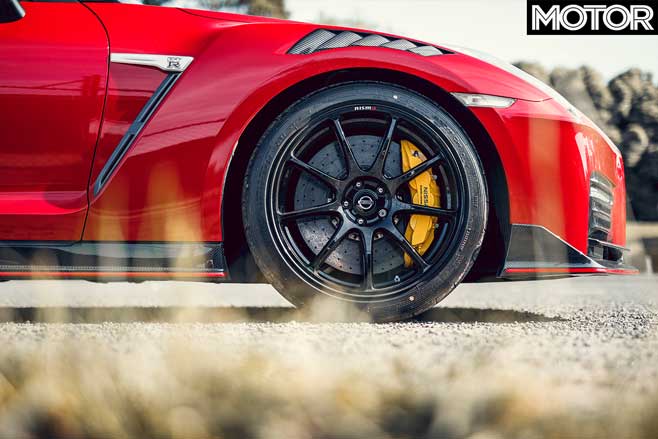
They’re state-of-the-art, Brembo-built and massive. Two-piece drilled discs bolted to aluminium bell housings measure 410mm up front and 390mm out back. That’s 20mm and 10mm larger than before. Its six-piston and four-piston calipers are also redesigned, and 16.3kg has disappeared from behind the Nismo’s wheels in total.
Even the Nismo’s GT3-spec turbochargers were used to fight the war on weight. Each turbine catches exhaust gases with 10 vanes (instead of 11) that have been thinned down 0.3mm to shave precious grams and crucially boost response, since the 3.8-litre twin-turbo V6 is already verging on its limits.
While it pumps out the same 441kW and 652Nm as before, it spreads the latter over a wider range. Peak torque starts 200rpm earlier, at 3600rpm, and lasts until 5600rpm. Convenient, then, that the GT-R Nismo sits right on 4000rpm when Launch Control is engaged.
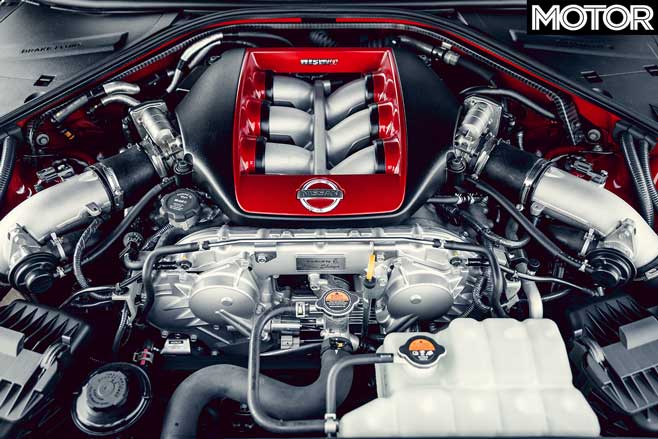
Pointed down Heathcote Raceway’s drag lanes, with everything in R mode, it blitzes from 80km/h to 120km/h in just 1.83sec, three-tenths faster than before. It’s an improvement repeated from 0-200km/h, which happens in 10.49sec. And as it fires down the runway a typical GT-R high-pitched gearbox whine overlays the guttural exhaust roar.
Launching a Nismo is visceral and mechanical. Upshifts whack you in the back and the acceleration forces you into the seat, but its rear-biased all-wheel drive system still needs that moment, if only a nanosecond, to calculate the perfect launch.
An Audi RS5 will instead, for instance, burst ahead for a moment as it rapidly releases the energy stored in its torque converter, while the Nismo’s six-speed twin-clutch eases in its clutches to maximise traction and preserve components.
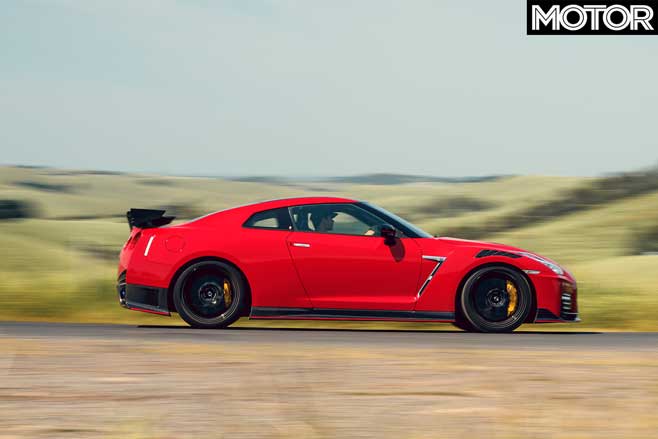
Few cars, though, can keep with it from here. Triple figures arrive in 3.14sec after leaving the line and the quarter mile is dusted in 11.04sec at 204.8km/h without roll-out. On a cool morning, with a jockey driving, close-to-empty tank and maybe a small tailwind, the Nismo could dip into the 10s.
Away from track, though, the VR38DETT remains one of the few large-displacement twin-turbo engines that still needs a wind-up. Floor it from south of 3500rpm and those big race-spec turbos spool quickly, yet even with their fancier vanes need a moment to deliver meaningful boost.
The transaxle can compound the frustrating wait by climbing down its six gears sequentially on kick-down. So, without the resources to fully re-engineer the gearbox, Nissan re-flashed it with a cleverer personality.
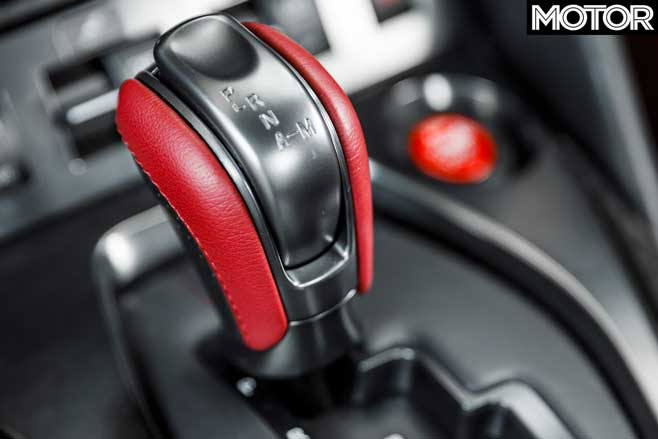
Flick the drivetrain mode switch into ‘R’ and now as you smash through winding roads it downshifts when you lift before a corner, rather than on the way out when you tickle the throttle. And every downshift fires a flurry of pops and bangs from the new titanium exhaust.
Out in the hinterlands this new drivetrain mapping keeps revs high at the gut-squeezing speeds the GT-R Nismo loves to carry through long, flowing corners. And with less flab trying to pull it into the weeds, the engineers took the opportunity to ease off damping rates and tune the springs to suit.
When I’m beckoned through a dipping left-hand bend for photography, it’s clear the Nismo still, like most GT-Rs, feels both big and heavy yet also light and wieldy at the same time. You can partly thank the steering for that.
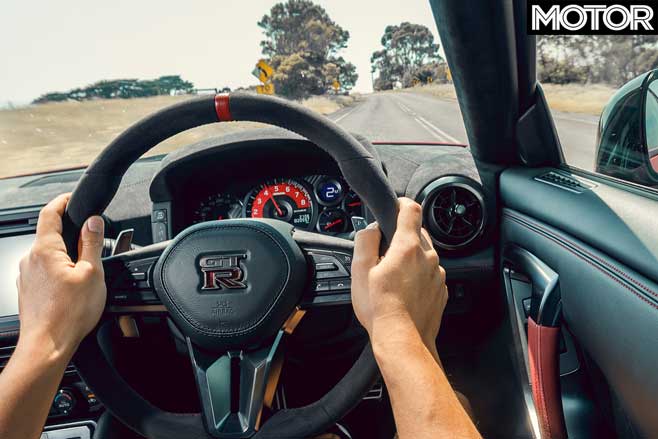
Although hydraulic, it’s suspiciously light in assistance and, no matter what suspension mode you choose, betrays the amount of grip on offer at turn-in. But while I’ve found other GT-Rs track with a ghostly feel around centre, the Nismo offers a real improvement in accuracy, immediacy and off-centre feel.
It helps that the Nismo’s special Dunlop SP Sportmaxx GT 600 run-flat tyres erase a groove from their already wide shoulder blocks. Their compound is new, and presumably softer, since the rears sport a promising 160 treadwear rating. And despite measuring 255mm and 285mm wide, they feel double that size as they carry you through corners at ridiculous speed.
Yet it’s here that you’re reminded of the car’s weight. The Nismo blasts through a dipping corner so fast it arrives at a road crease in the next bend too quickly and, unable to iron it out on huge 20-inch wheels, jumps to its side – especially with Comfort mode’s looser body control.
Stiffer damping modes shrink its weight. Rocket to a corner, brush the nicely weighted brake pedal to shirk load up front, turn in, then settle its stance with the throttle.
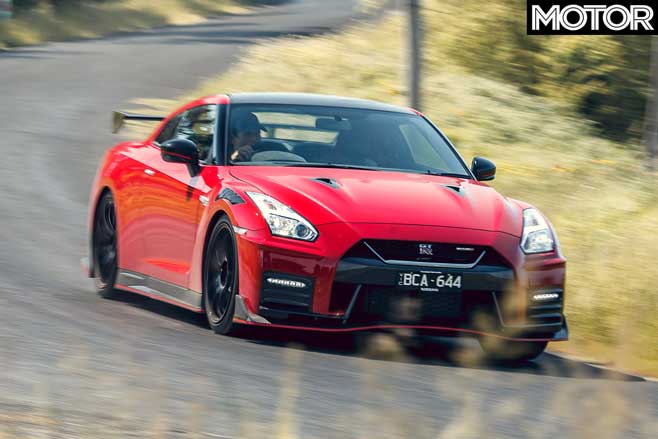
When the tarmac is dry and relatively smooth it’s unflappable. Sink the throttle with steering lock applied and it pastes every single newton-metre to road with surgical care. And the speed is ferocious.
Trying to provoke this beast in the dry seems brave, or stupid, on anything less than a racetrack. Or you could wait for it to rain. But something about its rear-biased all-wheel drive, a potentially 10-year-old ESC system and sparingly treaded R-spec tyres tell us that’s an even worse idea.
Scrappy road conditions also reveal some lingering bump steer and rack rattle. Here you have no choice but to slow down, as the suspension struggles to commit the tyres to the surface. But push on, push hard, and the Nismo can bully its way over rutted roads. It’s just not as enjoyable. Or fast.
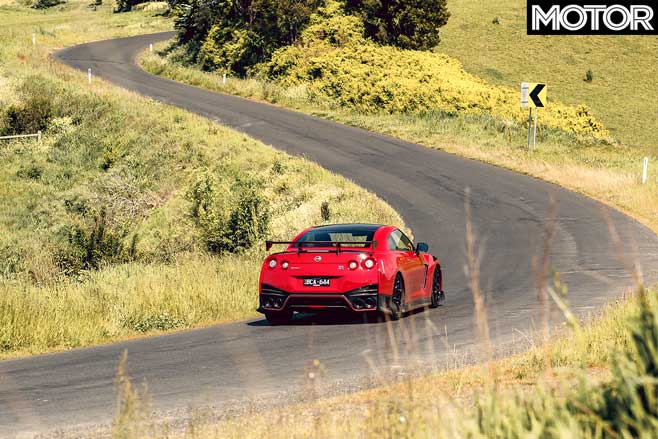
Where the Nismo acquits itself surprisingly well is in urban settings. Yes, the suspension falls completely out of sync in Comfort mode, where the softer damping leaves too much body control responsibility to the stiff springs. You pogo around on really lumpy stuff. But the ride’s more than acceptable for a couple of hours on a good highway.
While we didn’t get to punish the brakes much, they offered perfect bite, depth and feedback at all temperatures and should withstand atmosphere re-entry. Unfortunately the surface that we tested emergency stops on couldn’t provide enough grip to match their prodigious power.
The transmission is remarkably well mannered in stop-start traffic, smoothly stepping up and down through gears. Yes, its drivetrain will grumble and clank during tight manoeuvring, but at least the racecar-like sounds match its looks.
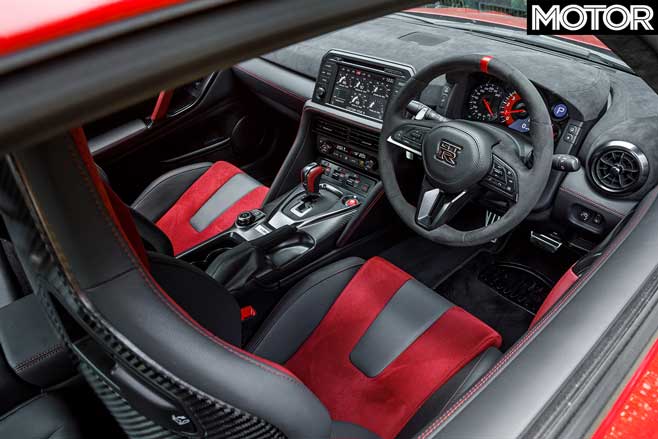
The cabin is enticing enough, even with the now somewhat dated-looking analogue dials and grainy infotainment screen. Outward visibility is excellent in all directions – the rear wing doesn’t really get in the way – as is noise insulation. And, barring everything but the worst driveways, the front splitter doesn’t require re-plotting your route home to avoid speed bumps. The seats are supportive, even if a bit tight across the back, and there’s loads of headroom to don a helmet.
Where the Nismo is most tiring is in traffic, when you’re trying to keep its carbonfibre extremities out of a cyclist’s leg. Because, really, you’d have to for something that costs $378K.
And yes, that’s something that must be discussed – the price. We understand it’s expensive to manufacture carbonfibre in small batches. Ditto brakes, turbines, tyres and so on. And we also appreciate these parts make this Nismo the fastest, fittest and meanest GT-R in Oz. And that’s impressive.

But lift the price bracket this far and you plonk the Nismo in a much fancier neighbourhood. Here, there’s no excuse for gearbox whine, an industrial-sounding engine or a dated interior. It’s Audi R8 V10 money.
For me, that price would be easier to hang your hat on if this Nismo was also the Nürburgring-conquering car. But it isn’t. And it’s $28K extra on top of a Mercedes-AMG GT R – a car only a few seconds slower at the Nordschleife than the much dearer Japan-only GT-R Nismo N-Attack A.
The 419kW/652Nm GT-R Track Edition costs $171K less and sports the same chassis, stiffer suspension and rubber. You can even option the same interior in the Track Edition and have change left for an Audi S4 and Ford Fiesta ST.
In a sense, the GT-R Nismo has become the giant it was originally created to kill. That said, if you’re looking for the ultimate Nissan GT-R in Australia, here it is. And that’s enough for some, even if it costs.
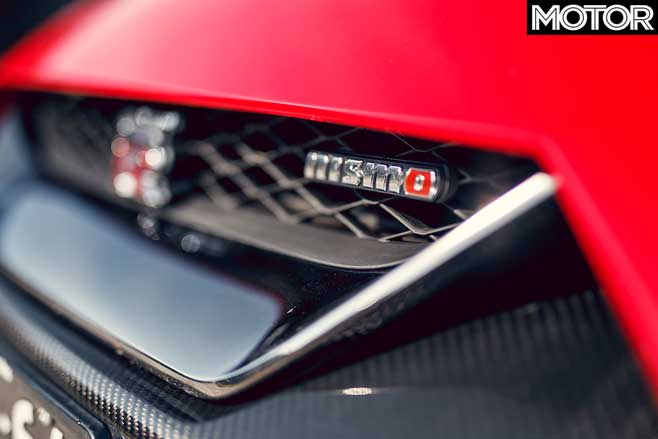
FAST FACTS 2020 Nissan GT-R Nismo BODY: 2-door, 4-seat coupe DRIVE: all-wheel ENGINE: 3799cc V6, DOHC, 24v, twin-turbo BORE/STROKE: 95.5 x 88.4mm COMPRESSION: 9.0:1 POWER: 441kW @ 6800rpm TORQUE: 652Nm @ 3600-5600rpm WEIGHT: 1715kg POWER-TO- WEIGHT: 257kW/tonne TRANSMISSION: 6-speed dual-clutch SUSPENSION: A-arms, adaptive dampers, coil springs, anti-roll bar (f); multi-links, adaptive dampers, coil springs, anti-roll bar (r) L/W/h: 4690/1895/1370mm WHEELBASE: 2780mm TRACKS: 1600mm (f/r) STEERING: electrically assisted rack-and-pinion BRAKES: 410mm ventilated/drilled two-piece discs, 6-piston calipers (f); 390mm ventilated/drilled two-piece discs, 4-piston calipers (r) WHEELS: 20.0 x 10.0-inch (f); 20.0 x 10.5-inch (r) TYRES: 255/40 ZRF20 101Y (f); 285/35 ZRF20 104Y (r), Dunlop SP Sport Maxx GT600 CTT NR1 PRICE: $378,000
PROS: Otherworldly performance, presence; easier to live with CONS: Otherworldly price; works best on a smooth surface RATING: 4 out of 5 stars
The Strip
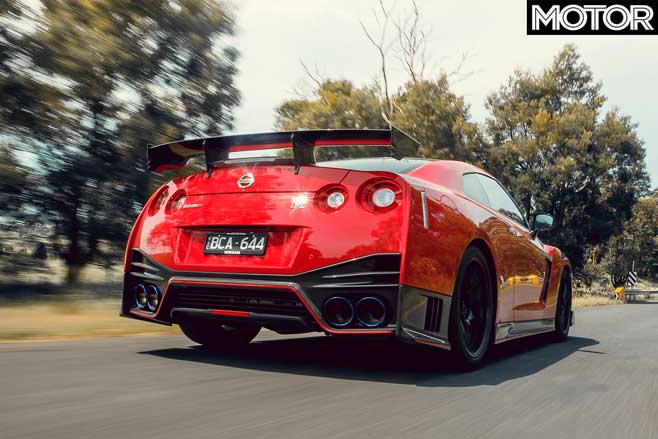
| Nissan GT-R Nismou00a0 | |
| 0-10km/h | 0.21sec |
| 0-20km/h | 0.55sec |
| 0-30km/h | 0.83sec |
| 0-40km/h | 1.08sec |
| 0-50km/h | 1.33sec |
| 0-60km/h | 1.63sec |
| 0-70km/h | 1.94sec |
| 0-80km/h | 2.31sec |
| 0-90km/h | 2.71sec |
| 0-100km/h | 3.14sec |
| 0-110km/h | 3.61sec |
| 0-120km/h | 4.16sec |
| 0-130km/h | 4.74sec |
| 0-140km/h | 5.33sec |
| 0-150km/h | 5.98sec |
| 0-160km/h | 6.74sec |
| 0-170km/h | 7.59sec |
| 0-180km/h | 8.50sec |
| 0-190km/h | 9.44sec |
| 0-200km/h | 10.49sec |
| 0-400m | 11.04sec @ 204.5km/h |
| 80-120km/hu00a0 (Drive)u00a0 | 1.83sec |
| 100-0km/h | 34.26m |
Heathcote Dragway, 17˚C, dry. No rollout applied. Driver: Louis Cordony


